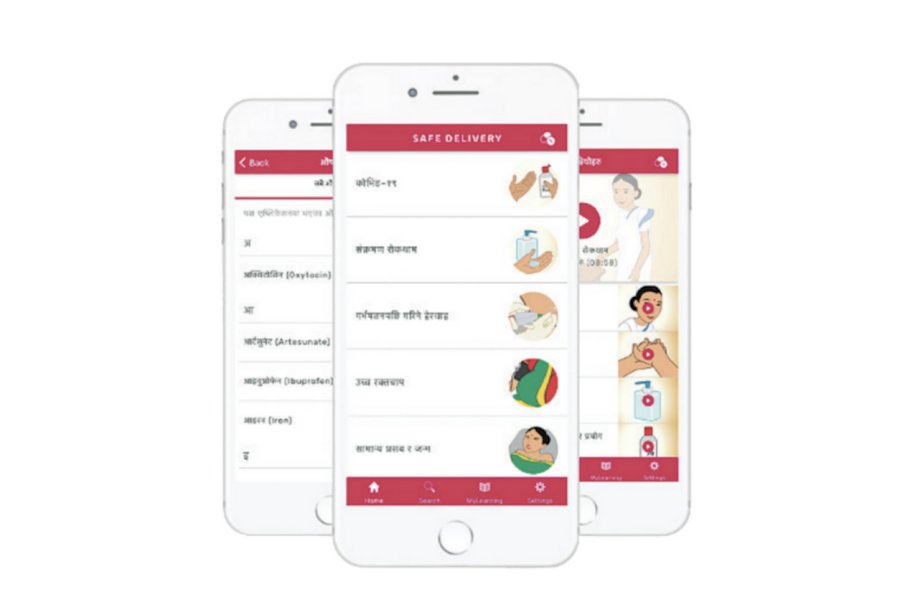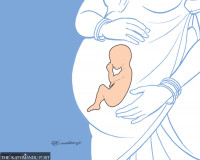Health
Health ministry launches safe delivery app
The app will help improve the quality of emergency obstetric and newborn care, and the main users will be frontline health workers.
Post Report
In a bid to support midwives and other healthcare personnel in ensuring safer births in low-resource settings, the Ministry of Health and Population has launched a “safe delivery app”.
Officials hope that the mobile application will complement and enhance the ongoing capacity-building of health workers and help in reducing maternal and newborn deaths.
“The Safe Delivery App provides up-to-date lifesaving procedures and practical guidance in the local language,” said Dr Bibek Kumar Lal, director of the Family Welfare Division under the Department of Health Services, at the launch of the Nepali version of the Safe Delivery App. “It aims to improve the quality of emergency obstetric and newborn care, and the main users will be our frontline health workers, especially nurses and midwives.”
Officials at the division said that the government has collaborated with the United Nations Population Fund (UNFPA) and the Maternity Foundation (MF) to launch the Nepali version of the widely used digital health tool.
Globally, every two minutes, a woman dies. In Nepal, two women die every day due to pregnancy-related complications—most of which are preventable, said Won Young Hong, a UNFPA representative in Nepal. “These are staggering numbers. UNFPA is pleased to work with the concerned stakeholders to localise this digital application so healthcare workers across Nepal can use it.”
The Safe Delivery App is an evidence-based learning and training tool designed to support midwives, nurses, and other healthcare professionals to assist during births and to manage the most common complications. Among other features, it contains the latest clinical guidelines, animated instruction videos, descriptions of practical procedures, and action cards. It is free, and once downloaded on a smartphone or a tablet, it works offline, making it possible to be used even in the most remote areas.
To date, more than 435,000 healthcare professionals across more than 70 countries have been reached through the Safe Delivery App and the accompanying programme worldwide, with Nepal being the latest country to introduce the App.
“We will work with provincial governments and development partners to quickly roll out the App throughout Nepal,” said Lal.
Nepal cut the maternal mortality rate from 539 per 100,000 births in 1996 to 239 per 100,000 births in 2016—for which the country even received a Millennium Award. According to the National Statistics Office report, the country has further reduced the number of deaths to 151 per 100,000 births in 2021. Maternal health experts, however, say that even if the country has made good progress in reducing maternal deaths, the current maternal mortality ratio is more than double the Sustainable Development Goals target, which is 70 maternal deaths per 100,000 live births by 2030.
Neonatal deaths have not declined between 2016 and 2022, according to the Nepal Demographic and Health Survey-2022 carried out by the Ministry of Health and Population.
The government’s target for the Sustainable Development Goals was to reduce neonatal mortality to 16 deaths per 1,000 live births by 2022 and 12 in every 1,000 live births by 2030.
The SDGs, a follow-up on the Millennium Development Goals (MDGs), aim to end poverty, hunger, and all forms of inequality worldwide by 2030, and Nepal has committed to meeting the goals.
The health ministry has been taking several measures to reduce maternal and neonatal deaths, including installing an underfloor heating system at birthing centres, setting up special newborn care units, training doctors, nurses, and paramedics in the district hospitals and distributing non-pneumatic anti-shock garments to prevent maternal deaths from excessive bleeding.
Besides, the ministry provides free service and travel allowances for those opting for institutional delivery and antenatal visits. It also distributes misoprostol, a medication used to treat postpartum bleeding in new mothers, through female community health volunteers.




 7.73°C Kathmandu
7.73°C Kathmandu













